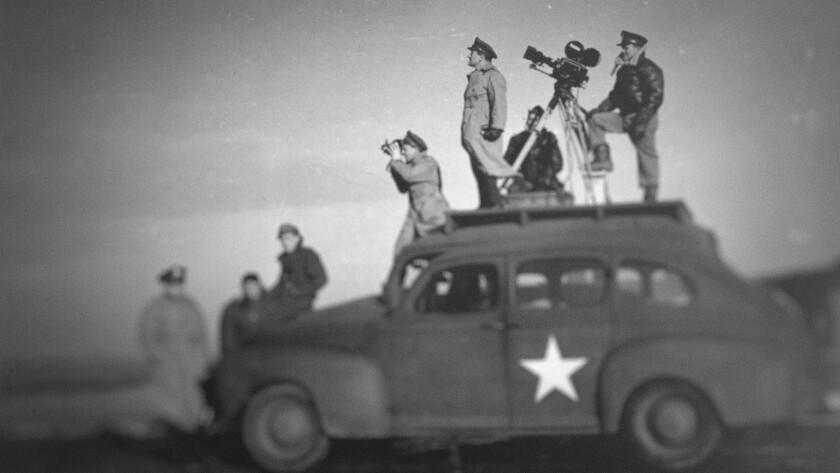Review: ‘Five Came Back,’ and Inspired the Likes of Spielberg
March 30, 2017 By By Ben Kenigsberg, NY Times

Recounting the stories of five Hollywood directors who served in World War II with cameras in tow, the 2014 book “Five Came Back,” by the journalist Mark Harris, is an extraordinarily detailed account of how the men brought the war home for viewers. Still, it has a problem endemic to film books: It lacks clips.
So perhaps “Five Came Back” was destined to become a Netflix series. Divided into three parts, this screen adaptation is a companion piece and a stand-alone work, and itself superlative film criticism. Directed by Laurent Bouzereau, “Five Came Back” will be shown theatrically in New York and Los Angeles starting Friday, when it also begins streaming on Netflix.
Sidestepping the impossible task of compression, this chronological series takes the gambit of having each director’s story relayed by a contemporary counterpart. The pairings aren’t always the expected ones.
Steven Spielberg, whose own movies share obvious affinities with those of Frank Capra and John Ford, is the surrogate for William Wyler. Mr. Spielberg’s eye is one of the series’ strongest assets: He extols the aerial photography in “The Memphis Belle: A Story of a Flying Fortress” (1944), an account of a B-17 bomber’s mission, and later notes how Wyler avoided camera motion until a crucial scene in “The Best Years of Our Lives” (1946), one of several postwar films held up as examples of how the directors’ experiences overseas transformed their movies.
The explication of Frank Capra falls to Guillermo del Toro, who shares insights into Capra’s populism, his immigrant’s can-do mentality and his shrewdness as an entertainer. Paul Greengrass, no stranger to drama in the air (“United 93”) or on the sea (“Captain Phillips”), seems to understand Ford intuitively. Of Ford’s documentary “The Battle of Midway” (1942), he notes the dangerousness of the camera placement and moments when violence visibly distresses the image. Francis Ford Coppola defends John Huston’s use of staging in “The Battle of San Pietro” (1945) as potentially capturing the essence of the situation more completely than straight documenting might have.
With its use of archival clips, men talking into the camera and narration by Meryl Streep, “Five Came Back” might seem like standard documentary filmmaking. But it’s easy to overlook the complexity of its editing, which distills a trove of footage in superbly illustrative ways.
Of the wartime directors, George Stevens, whose story is told by Lawrence Kasdan, arguably has the spottiest critical reputation, and he vanishes for long stretches of “Five Came Back” until his teaming with John Ford to film the D-Day invasion.
But if you were to watch “Five Came Back” with the sound off, the shots that might most catch your eye are Stevens’s extraordinary images of the liberated streets of France and of the horrors of the Dachau concentration camp. His subsequent film version of “The Diary of Anne Frank” (1959), sometimes ridiculed for its counterintuitive use of CinemaScope and the casting of the model Millie Perkins, may be the movie that gains most in retroactive inflections.
Above all, “Five Came Back” is an invitation to see more: It’s hard to watch it without wanting to visit (or revisit) Wyler’s “Mrs. Miniver” or Ford’s “They Were Expendable.” It’s further proof, if any were needed, that these men weren’t simply creating propaganda, but art that would endure.
